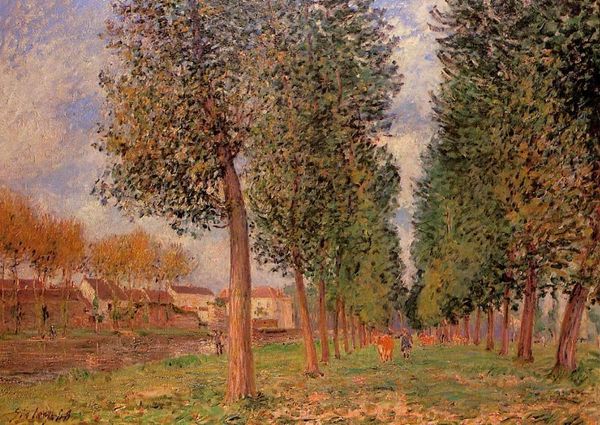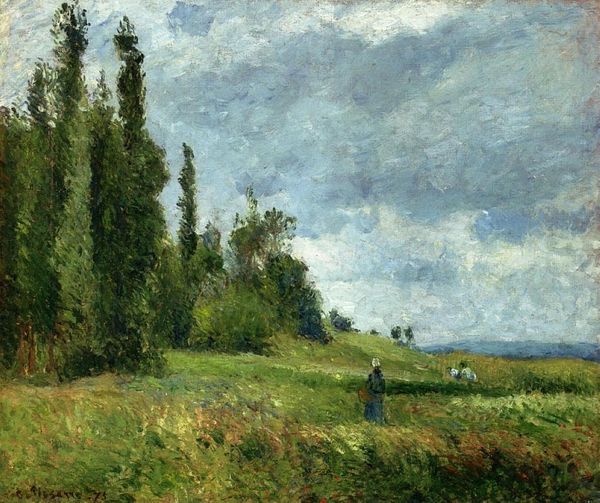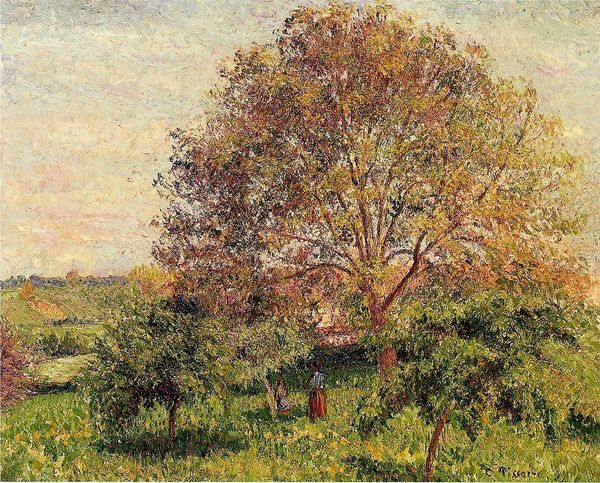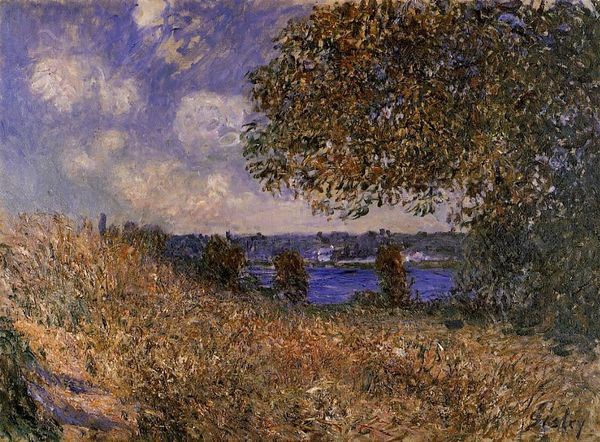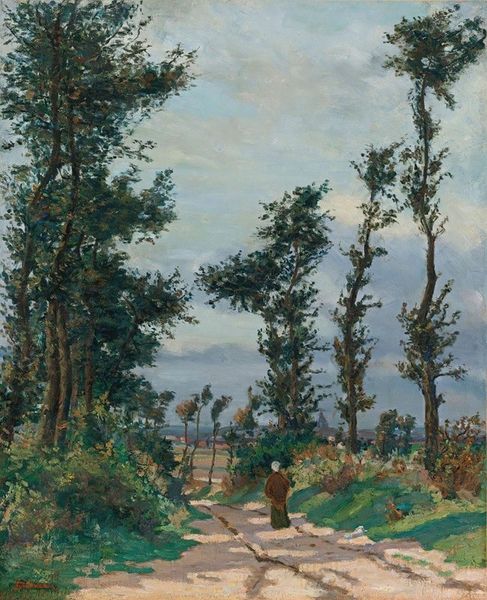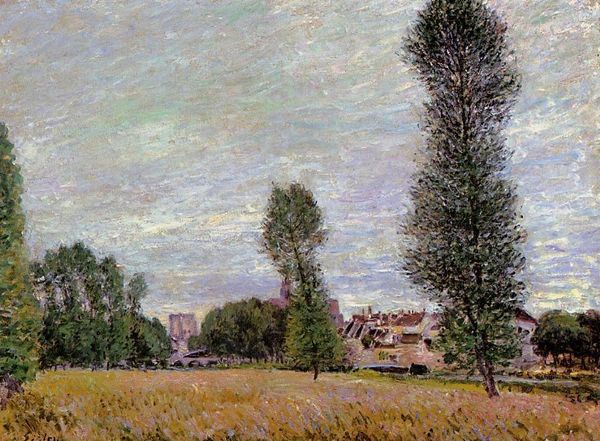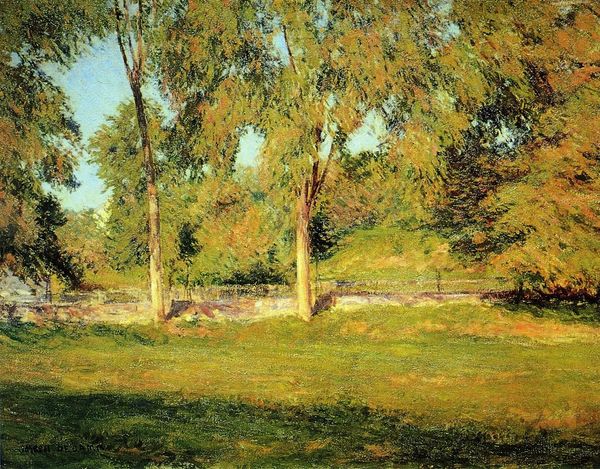
The Countryside in the Vicinity of Conflans Saint Honorine 1874
0:00
0:00
camillepissarro
Private Collection
painting, plein-air, oil-paint, impasto
#
painting
#
impressionism
#
plein-air
#
oil-paint
#
landscape
#
perspective
#
impressionist landscape
#
oil painting
#
impasto
#
realism
Copyright: Public domain
Editor: Here we have Camille Pissarro's "The Countryside in the Vicinity of Conflans Saint Honorine," painted in 1874. It’s an oil painting with visible brushstrokes that create a sense of movement and light, but overall, the verdant shades cast a peaceful, almost somber atmosphere for me. What are your initial impressions? Curator: It's fascinating how Pissarro uses the visual language of landscape to convey a particular relationship between humanity and nature. Look at the layering of forms, those trees as almost sentinels. Does that verticality remind you of anything else? A Gothic cathedral, perhaps? Pissarro's perspective isn’t merely recording scenery; it’s creating a symbolic space, loaded with the cultural memory of agrarian life being increasingly encroached upon. Editor: So the trees aren't just trees; they're representative of something bigger? I thought the point of Impressionism was to capture a fleeting moment? Curator: Precisely. And that “fleeting moment” carries a tremendous symbolic weight! The encroaching industrialization – even though it’s absent visually – is present as a symbolic absence, pushing the ‘natural’ elements of this image toward symbolic stand-ins that suggest something vanishing. The composition reinforces that, wouldn't you agree? Editor: I think so. The light feels like it's receding into the background, adding to that feeling. Curator: It’s not just seeing the world; it's about imbuing the visible world with meaning from our shared human experience. And that is really at the core of so many images, no? Editor: It completely changes how I see the Impressionists. Thank you for expanding my perspective. Curator: And thank you for your insights. It’s always a pleasure to consider how art continues to resonate across generations and shift our understandings.
Comments
No comments
Be the first to comment and join the conversation on the ultimate creative platform.
